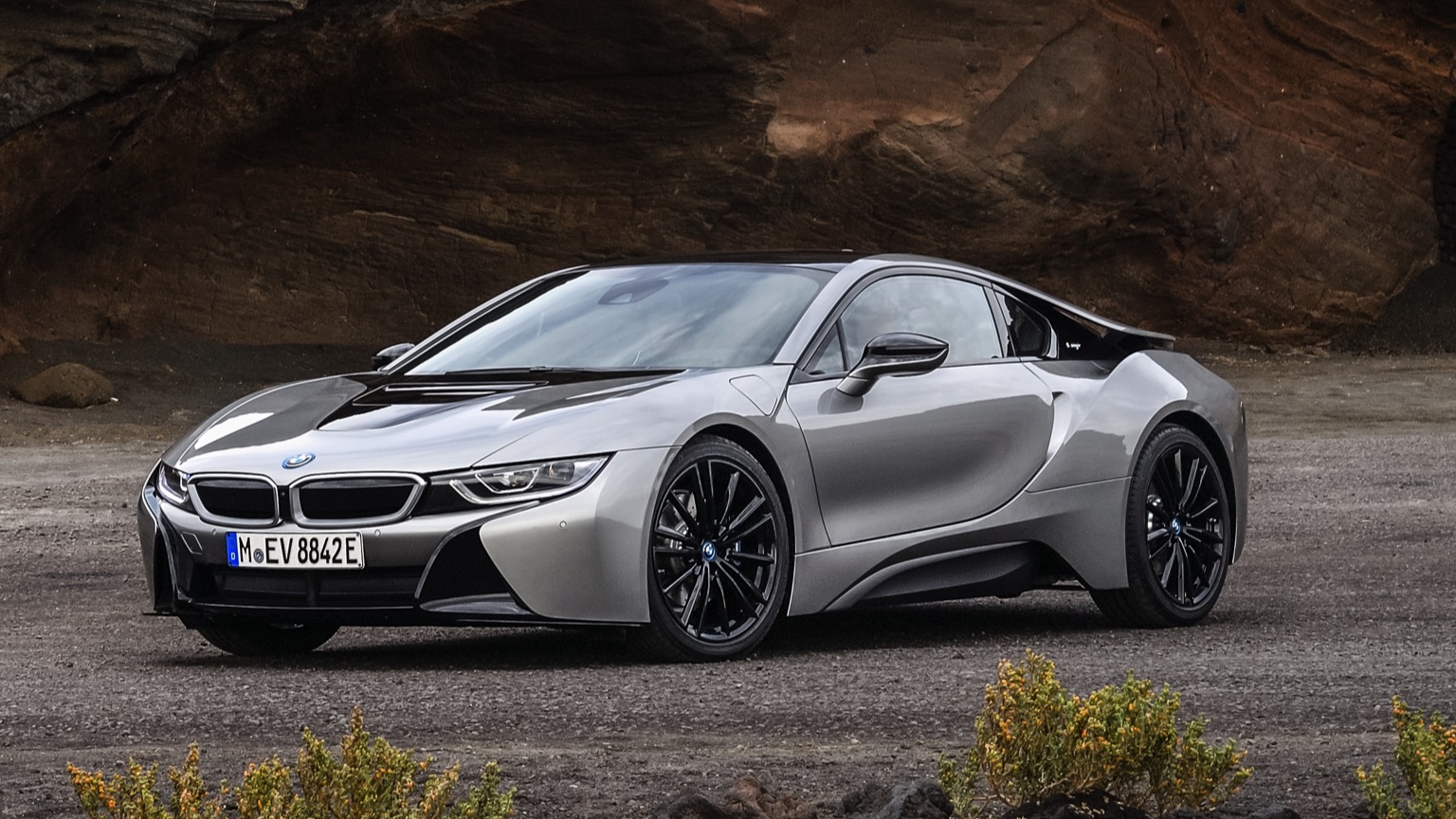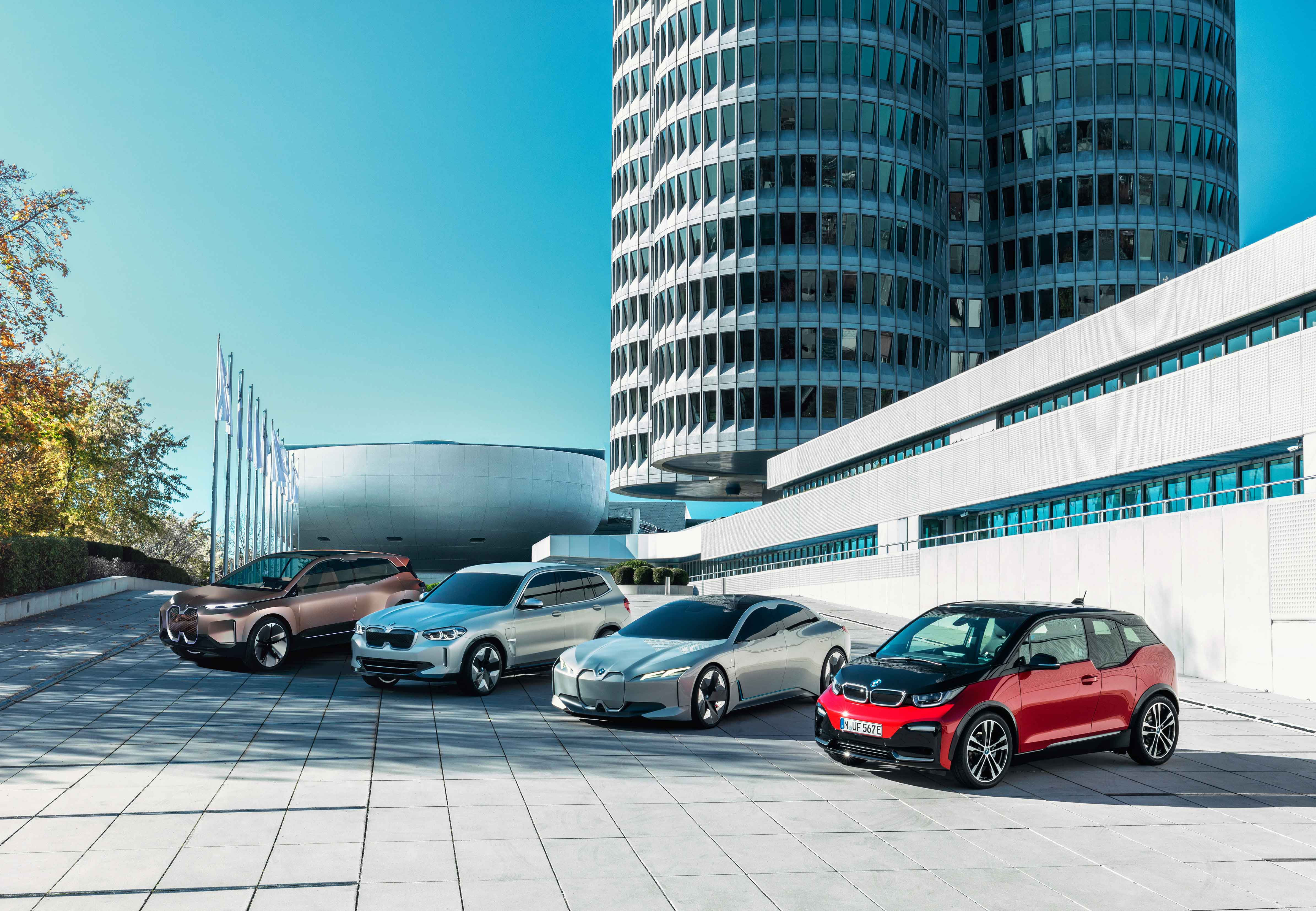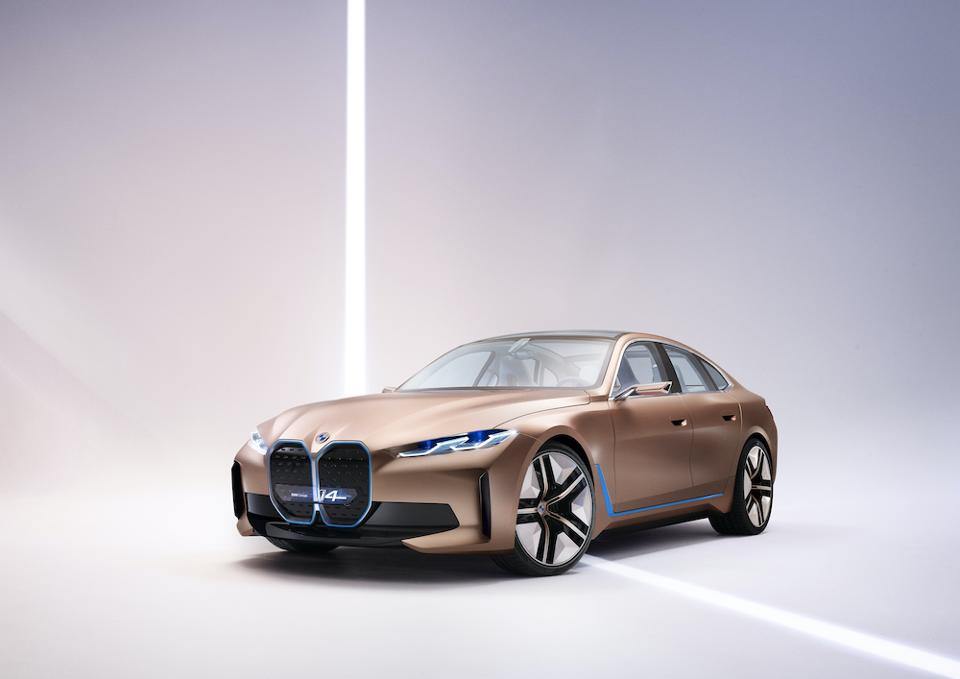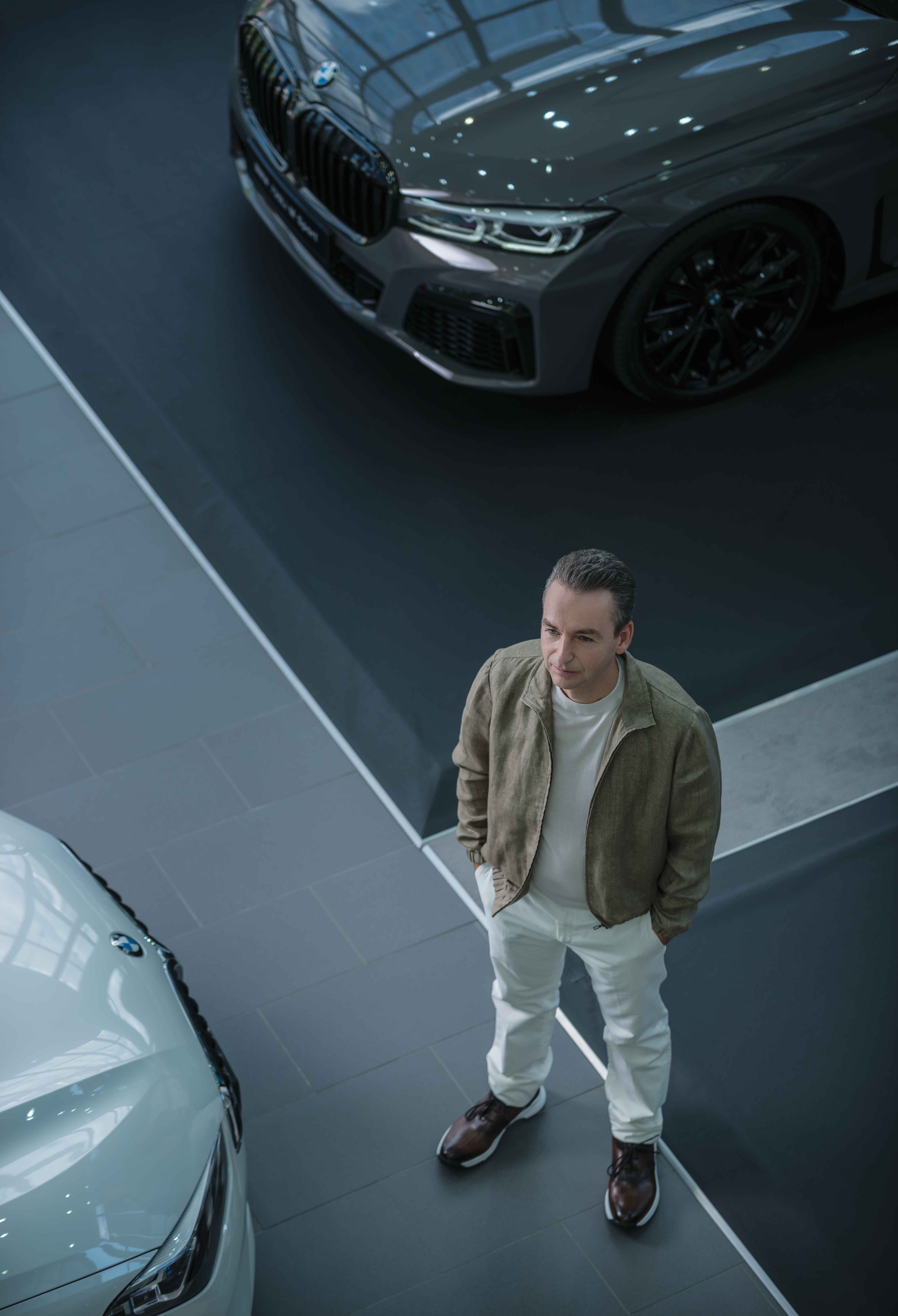“The Pandemic Will Permanently Change the Auto Industry,” proclaimed a New York Times headline, one of many generated in recent months on how the COVID-19 crisis could alter the world as we know it. While auto sales may take a hit due to the drop in numbers of people traveling for work or leisure, the Gray Lady’s Frankfurt-based European economics correspondent Jack Ewing explained, unexpected outcomes of nationwide shutdowns — from clearer skies to dips in air pollution levels — could nudge consumers towards mobility options that produce less direct emissions.
That’s the same approach the BMW Group has been taking with BMW i, the sub-brand focused on mobility of the future that BMW Group Asia Managing Director Mr. Christopher Wehner was personally involved in from 2008. “We are the automobile company with the most plug-in hybrid and electrified models in the current range,” he says.
In its portfolio, the group will launch 25 new electrified models by 2023, two years earlier than a previously announced target, with more than half of those models being fully electric.
“I think electrification played a major role for the BMW Group,” Mr. Wehner continues. “We started very early with electrification in our range.” The company launched the i3 fully electric hatchback in 2013 and the i8 plug-in hybrid sports car in 2014, both of which were purpose-built for electromobility; now, the iX3 sports activity vehicle, iNext fully electric SUV, and all-electric i4 coupé are set to enter the market in 2021.
“Electrification is not only something that is rational — it’s really fun to drive an electric car,” Mr. Wehner says. “BMW stands for driving pleasure, and I guarantee you will experience the same driving pleasure if you drive an electric car. It’s a promise from us.”
In particular, the i8 did an immense service to demonstrate the BMW Group’s commitment and ability to place tech-forward mobility at the forefront of its objectives. “The i8 was an extremely successful model, not only in terms of the numbers achieved but also what we achieved with this model for our brand image and the BMW i brand,” Mr. Wehner explains.
 The BMW i8
The BMW i8
“I think everyone could see immediately from 2014 that this was a sports car from the future. It was seen as futuristic, not only in terms of the engine, which was a plug-in hybrid, but also in terms of design. And the i8 was the perfect approach to see how seriously the BMW Group took electromobility.”
While products under the BMW brand have a successor — for instance, seven generations of the 3 Series have been released since 1975, each one representing a stage in the evolution of the model — the BMW i brand adopted a different philosophy, Mr. Wehner explains: It wouldn’t have been possible for the i3, for example, to contain all the technology needed for autonomous driving and to provide different styles of driving, because the i3 was conceptualized for the urban megacity.
And now, with the iNext, the BMW i brand is moving in the direction of offering an SUV to transport more people and thus a different feeling of traveling. “I think this shows the philosophy of the BMW i brand: to always be a frontrunner in many aspects of the mobility trend,” Mr. Wehner says.
- LEAD THE WAY
- TECHNOLOGY & PEOPLE
Lead the Way
Though no one foresaw the global impact of the COVID-19 crisis, Mr. Wehner says, the company’s forecast with regard to technology transformation still holds true: Trends in electrification, more digital services fitted in the car, and autonomous driving will continue, he states, unaffected by the pandemic.
“There are lots of things that give people the perfect driving fun — it’s not only the engine, it’s the whole package of the car,” he continues. “The weight of the car, how you position the engine, what effect the engine has, how fast batteries can give their energy to the engine — a lot of things are similar to what we have achieved in combustion engines that had differentiated us from other companies and we will do the same for electrified cars.”
 From left to right: BMW Vision iNext, BMW iX3, 2018 BMW i4 Concept, BMW i3.
From left to right: BMW Vision iNext, BMW iX3, 2018 BMW i4 Concept, BMW i3.
Meanwhile, customers will continue to look at cars in terms of usage more than ownership, he says, and opt for the type of engine that best suits their lifestyles and requirements. “In Germany, we will have combustion engines, electrified engines and hybrid engines at the same time, and the customer profiles for each are completely different,” Mr. Wehner explains. “You will find some who use a car only in the city, and for them an electrified engine is the right one. Others might need to travel between two cities, so they need a plug-in hybrid or combustion engine to cover that distance.
“This is why there will be a parallel of combustion engines, electrified engines and plug-in hybrid offered, and this is why we always say we want to give the decision to the customer, what we call ‘the power of choice’ — we focus on the customer and his profile and we will provide him with the right product.”
Massive change has taken place in the automotive industry — “I must say the development in the current times is tremendous,” Mr. Wehner says.
“People can drive themselves or they could be driven by autonomous driving and driving assistance systems, and if you take this into account, that the driver may not have the responsibility of driving anymore, that raises the question: What does he do? Why is he traveling in the car? This brings digitalization in: What do you offer your customer in the car when he drives from A to B? Some may want to watch something, while some may want to buy something, so you can offer your customer a lot of things during the drive time. That’s where digitalization comes into play, and this is why we are so behind digitalization.”
 The BMW i4 Concept that was unveiled at this year's digital presentation.
The BMW i4 Concept that was unveiled at this year's digital presentation.
Expanding electrification requires convenient transportation infrastructure on a large scale to be in place for the entire ecosystem to be effective, though, and the relationship with car manufacturers is a mutualistic one. This is part of the reason BMW collaborated with charging companies to install more than 4,000 electric vehicle charging points in Germany by 2021.
“If we have [electrified] products in our range, but our customers cannot charge the products within the infrastructure, they wouldn’t buy our products,” Mr. Wehner explains. “On the other hand, the companies that [build] the infrastructure might say, I cannot implement the infrastructure if you as the automobile company do not offer enough products.
“With a better infrastructure, you can reduce battery capacities, and that reduces cost, and electric cars will become cheaper, and that’ll be another push for electromobility. And I think with this example you can see that it all works together.”
 The BMW iNext, BMW iX3 SUV and BMW i4 four-door featured in the cold-weather teaser.
The BMW iNext, BMW iX3 SUV and BMW i4 four-door featured in the cold-weather teaser.
While it solidifies its position as a marque of repute when it comes to electric vehicles, BMW’s prominence as a maker of luxury vehicles looks set to continue: At a time when some consumers are rethinking ownership and their relationship with possessions, this January the group announced its luxury segment still posted a 66 percent year-on-year increase in sales for 2019, attributed to the new 8 Series, 7 Series and X7.
“I think the luxury segment performs well because, especially if you look to the automobile industry, companies like BMW offer really good solutions to the customer, and the customer is prepared to pay for the technology and benefits,” Mr. Wehner explains. “There are a lot of things on which people can spend their money, and customers will decide what is more important for them. Fortunately, it seems especially BMW has an attractive offer that people will spend their money on its luxury cars.
“It’s always a bundle of things. The brand is important, so is the product and services, and of course our dealership is important, and how we handle all the customers. These all play a major role, and at the end the customer is satisfied or even delighted with what he experiences, and this keeps our customers loyal. We always try to delight our customers with unexpected things, and to improve our service from day to day.”
- LEAD THE WAY
- TECHNOLOGY & PEOPLE
Technology & People
Mr. Wehner developed an affinity with vehicles and technology long before he joined the BMW Group in 2000 as Mini’s general manager of product, price and brand strategy. It started with bicycles, he says; he had a knack for changing tubes and making repairs. At 15, he graduated to a motorcycle that was limited to 25kmh, and through tinkering with the machine to make it run faster, he improved his technical capabilities.
Another factor that influenced Mr. Wehner tremendously was that his father always drove a BMW. “I grew up with BMW cars in my household, and my father always told me BMW built the best cars, especially when it comes to engines,” he adds.
In particular, the family inline six-cylinder left a deep impression. “The sound is really special, and I [remember how it sounded] exactly from my childhood and my youth, because my father accelerated the six-cylinder and always talked about the nice sound of the six-cylinder,” he recounts.
“Maybe this was one of the reasons why I joined the BMW Group later on: If you’re so familiar with the brand and so behind the brand, it’s natural you’d want to work for this brand.”
 On Christopher Wehner: Sweater, bomber jacket and trousers, all from Loro Piana
On Christopher Wehner: Sweater, bomber jacket and trousers, all from Loro Piana
Having enjoyed studying marketing as part of his MBA program at the University of Erlangen-Nuremberg, Mr. Wehner appreciates the perspectives of customers and the ability to consider what benefits them. “And I think in the BMW Group, I could really find the two directions, coming from technology and coming from the customers’ side,” he explains.
Even if a fully electric fleet is an eventual goal, BMW believes in retaining the variety in engine types to accommodate the diverse needs of today’s consumers at differing stages on the journey to electrification.
“Another thing that shows what our strategy is: There isn’t only one forecast where you know exactly what will happen in the future, but the development will be different from country to country,” Mr. Wehner posits.
“And to be flexible with that, we will have in future one car architecture on which we can position all three kinds of engines. With one architecture, we can decide, according to the customer’s wish, whether we position the electric engine, the plug-in hybrid engine or the combustion engine into the car.
“For us, it’s important to be flexible in production, because if you were to make [each type of car] individually, by having one platform for each type of engine, and [the market] becomes different from what you have forecasted, you cannot produce it. This shows that to forecast the future is really difficult, and you have to have a flexible approach.”







 The BMW i8
The BMW i8
 From left to right: BMW Vision iNext, BMW iX3, 2018 BMW i4 Concept, BMW i3.
From left to right: BMW Vision iNext, BMW iX3, 2018 BMW i4 Concept, BMW i3.
 The BMW i4 Concept that was unveiled at this year's digital presentation.
The BMW i4 Concept that was unveiled at this year's digital presentation.
 The BMW iNext, BMW iX3 SUV and BMW i4 four-door featured in the cold-weather teaser.
The BMW iNext, BMW iX3 SUV and BMW i4 four-door featured in the cold-weather teaser.
 On Christopher Wehner: Sweater, bomber jacket and trousers, all from Loro Piana
On Christopher Wehner: Sweater, bomber jacket and trousers, all from Loro Piana




 Back
Back
